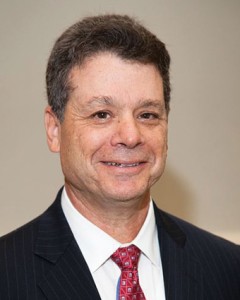Indemnification reform still a significant issue - by Simson
Indemnification is an agreement between two parties for one party to assume liability in the event of a loss (simply put, shifting risk from one party to the other). Professional engineering service firms (consultants) at times may be requested to execute contracts that include indemnification provisions that result in the consultant assuming some of the client’s legal liabilities and thereby act as an insurer for the client. Unlike contractors, design professionals do not take over or exercise constructive control over a job site and therefore should not be required to indemnify the client for liabilities that are due to anything other than the consultant’s negligence. The indemnity clauses in many public agency contracts for professional engineering services in New York expose consulting firms to liabilities which are outside the control of the consultant and cannot be covered by insurance. If a consultant signs an indemnity that is not limited to just the consultant’s negligence, they are accepting liability beyond that required by law and beyond that for which they are insured.
Professional liability insurance covers consultants against injuries and damages resulting from their negligent professional acts, errors or omissions. To prove negligence, a claimant must establish a professional standard of care, establish the consultants’ duty to adhere to that standard of care, and establish their failure to do so - and then prove that this failure proximately resulted in injury or damage to the claimant.
Unfortunately, many indemnity clauses require firms to assume risks that go beyond the consultant’s negligent errors and omissions and shift liability to the consultant for all acts regardless of whether there was any negligence by the consultant. There are indemnity clauses that require consultants to be liable for negligent acts of the agency and its employees and other consultants or contractors; certain clauses go so far as to require the consultant to be liable for alleged acts. Some of these clauses even require the consultant to defend the client by paying for the owner’s defense costs from the moment a suit is filed or a claim has been made, even if it is ultimately determined that the consultant was not negligent in their services. Unfortunately, these legal costs are then borne by the consultant, since they are not paid for under their professional liability insurance policy. Indemnity clauses which go beyond what a consultant can be insured for do not provide the public with any meaningful protection since consulting firms do not maintain any assets which would be available to meet the cost of any but the smallest judgments. These costs increase the overhead of firms thereby needlessly increasing the fees charged for their services and put many firms in a position of losing their businesses if an uninsurable claim results in a judgment and/or defense costs that are beyond their ability to pay.
Legislation introduced in the assembly and senate – A 5981 (Schimminger) and S 5129 (Martins) - will make indemnity language standard throughout New York State for public entities. Professional firms will indemnify and hold clients harmless from liabilities, damages and costs arising out of negligent acts, errors and omissions for which the design consultant is legally liable.
Unreasonable and uninsurable indemnity clauses in contracts are harmful to every party involved. It not only puts businesses at risk of failing but it will, at the end of the day, prevent individuals who are harmed from just compensation. ACEC New York urges New York to reform the way these clauses are worded.
ACEC New York is a proactive coalition of 280 firms representing every discipline of engineering related to the built environment—civil, structural, mechanical, electrical, environmental, geotechnical—and affiliated companies. Our shared goals are to further the business interests of our membership, enhance the quality and safety of the environment we live and work in, and help ensure the vitality of our communities. For more information, visit www.acecny.org.
Jay Simson, CAE, is president of ACEC New York, Albany, N.Y.
Related Cos. and Sterling Equities open housing lottery for Willets Point Commons


The CRE content gap: Why owners and brokers need better digital narratives in 2026 - by Kimberly Zar Bloorian








.gif)

.gif)
.jpg)
.gif)